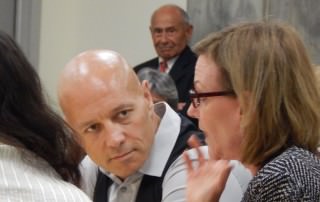Your donation will help us produce journalism like this. Please give today.

Ways to pay for technology, as indicated by the task force.
After studying technology issues for more than a year, an LA Unified task force this week offered their ideas for the district after the botched iPad debacle that was supposed to result in one computer device in every student’s hands.
The price tag would be $311 million for “a 1:1 environment,” providing every student with a tablet or laptop, but the Instructional Technology Initiative Task Force also explained how much the district has already done in a year in their comprehensive report issued Tuesday and presented to the school board.
For example, 749 school sites have had full wireless infrastructure added this year, and 89 Early Educational Center sites will get it by the end of next school year, according to the report. Bandwidth in the district expanded to 119 gigabits, nearly double from a year ago.
More than 160,000 iPads, Chromebooks and Windows devices have been distributed to the schools since 2013.
“We are aware that as soon as we pressed the button to print this out, it is all out of date,” said Frances Gipson, who was put in charge of the task force last year by former Superintendent Ramon Cortines. “The world has changed by the time we do it.”
Superintendent Michelle King praised the more than 50 teachers, principals, parents, students, community computer experts, business people and administrators who were part of the task force and met every Thursday for the past year to work on the instructional technology issues facing the district.
“They met in small groups and large groups and even virtually to see how it can be done and have given us some principal-driven recommendations,” King said.

The task force in action during the Cortines administration.
The task force suggested ways of paying for the plan through bond funds, textbook funds, external partners and leasing devices, as well as having students bring their own devices to school to use for classwork. They also identified problems with the existing computer distribution devices, such as keeping track of them.
The recommendations involve the students being self-directed and the teachers being able to design their own instruction. They suggested avoiding a one-size-fits-all approach and emphasized flexible learning environments and a personalized approach. The recommendations include support for teachers and tools to identify effectiveness so there is consistent learning in all areas of the district.
“I would like to know what we would need to implement this,” said board member Monica Garcia. “What I see is us closing the digital divide that separates our families from others.”
Board President Steve Zimmer suggested the district look at how the devices could be used in the students’ homes. He said he would like to see all students being bilingual and also be able to write code for computers.
Board member Monica Ratliff said she thinks this should get to all the high schools as soon as possible and hopes the training for the teachers would not create too much of an extra burden for them.
The ideas and recommendations will continue to be collected on a free publishing platform called Scalar, said Sophia Mendoza from the task force.
“We knew the minute we printed it, it was out of date because of the rapid nature of technology,” Mendoza said. “This platform allows us to build out the recommendations as they change.”
The superintendent is now reviewing the recommendations and determining how to implement them.